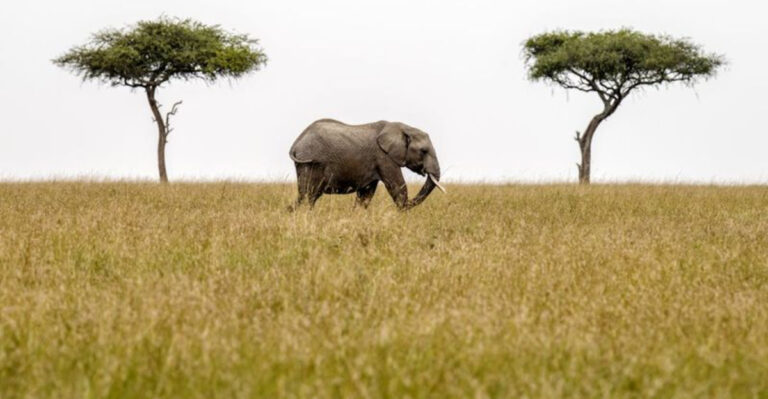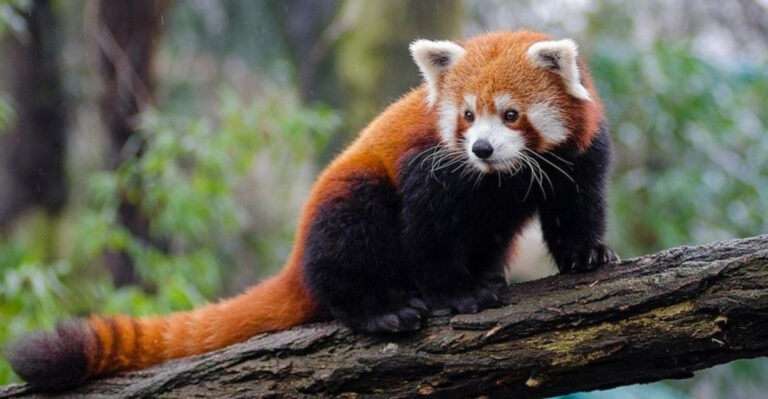What Do Chimpanzees Eat? Inside The Diet Of Our Closest Relatives
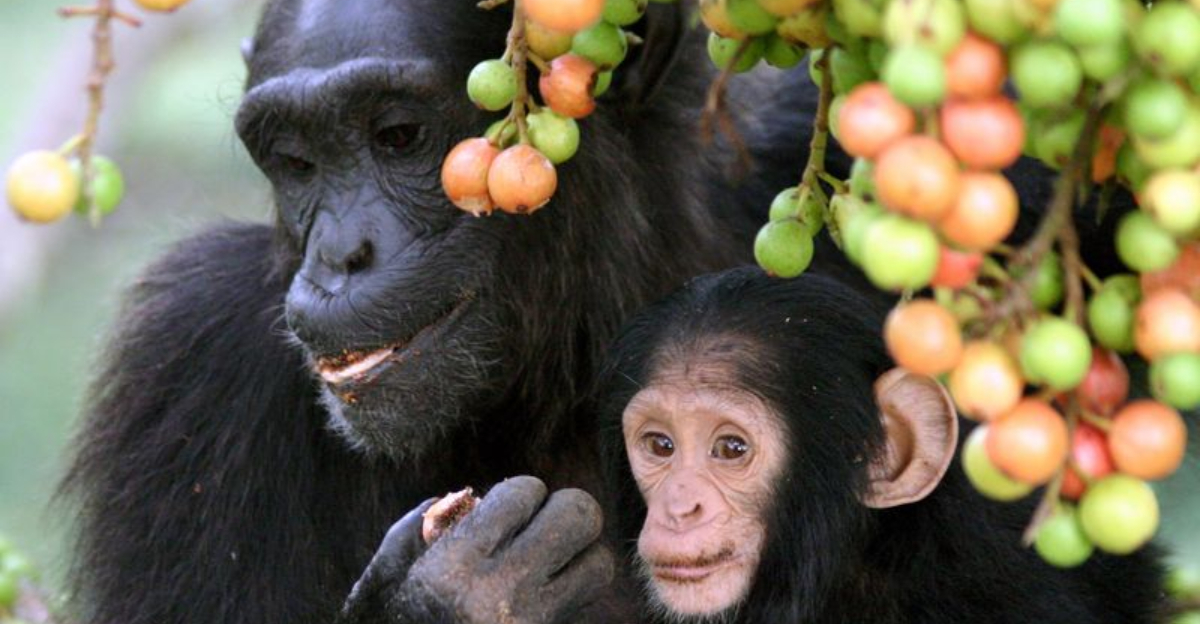
Chimpanzees, our closest living relatives sharing 98.6% of our DNA, have fascinating eating habits that reveal much about their intelligence and survival skills.
These remarkable primates have a diverse diet that changes with seasons and habitat, showing their adaptability in the wild. Understanding what chimps eat helps scientists learn more about our own evolutionary history and nutritional needs.
1. Leaf Munchers
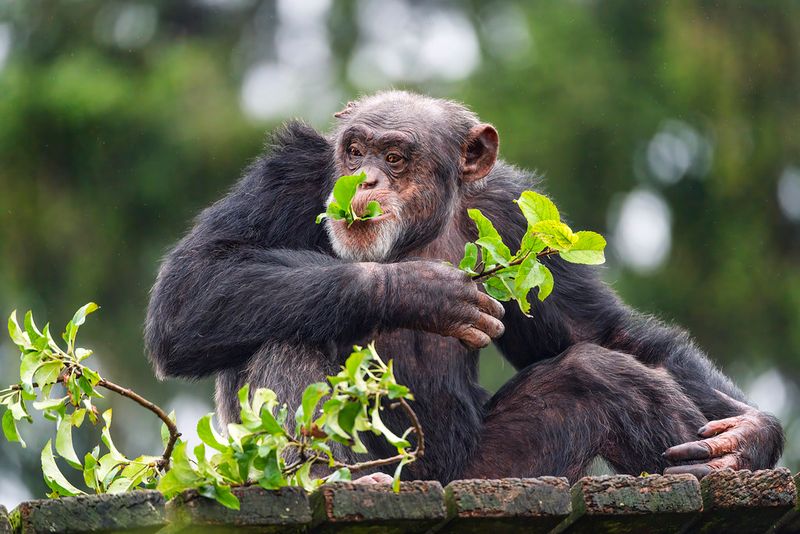
Young, tender leaves provide essential nutrients when fruit becomes scarce. Chimpanzees carefully select which leaves to eat, avoiding toxic varieties and choosing those with medicinal properties.
They’ve been observed folding leaves into packages to drink water or collect honey. Some chimps even use special techniques to remove tough stems and veins before consuming the more palatable parts of the leaf.
2. Nut Crackers

Cracking open tough nuts requires serious skill! Chimps use stone or wooden hammers and anvils to access nutritious nuts like oil palm kernels and coula nuts. This tool use demonstrates their remarkable intelligence. Young chimps spend years watching adults before mastering this technique themselves. Different chimpanzee communities have developed unique nut-cracking methods, showing that they have distinct cultural traditions just like humans.
3. Insect Snackers
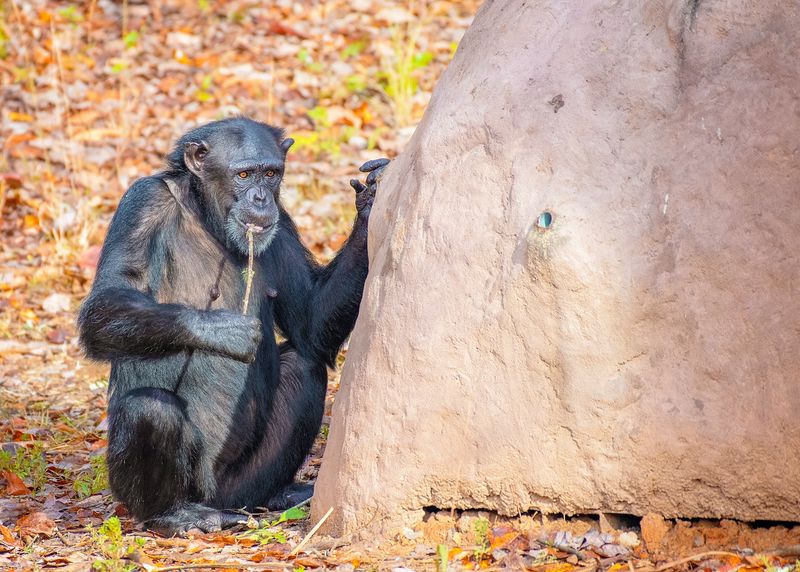
Termites, ants, and other insects provide chimps with protein-rich snacks. They craft special tools from twigs to “fish” for termites in mounds or ant nests.
A chimp will strip a branch, shape it to the right size, then carefully insert it into a termite mound. When termites cling to the stick, the chimp pulls it out and licks off the tasty insects. Some groups even use different tools for different insect species!
4. Honey Hunters
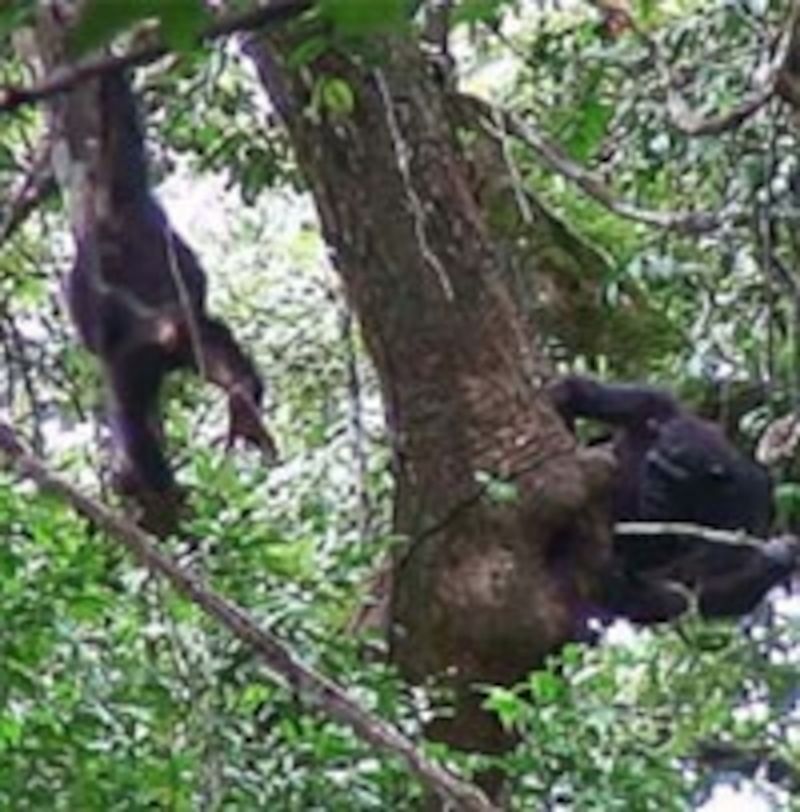
Sweet, energy-rich honey is a prized treat that chimps will brave bee stings to obtain. They’ve developed special tools—like honey dippers made from chewed bark—to extract honey from bee nests.
Some clever chimps use one stick to break open the hive and another to collect the honey. Researchers have observed that chimps will sometimes wait until rainy days to raid hives, as bees are less active and aggressive during wet weather.
5. Meat Eaters
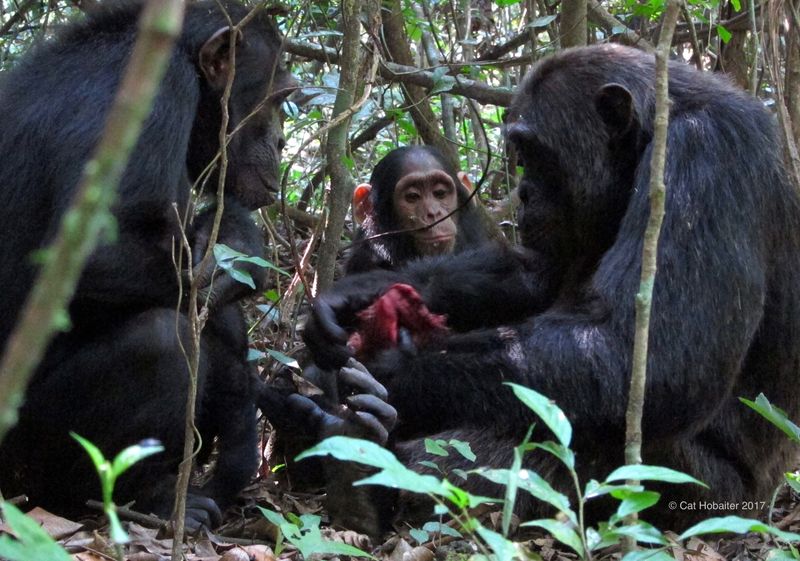
Contrary to popular belief, chimps aren’t strict vegetarians! They hunt and consume smaller mammals like monkeys, bushbabies, and even baby antelope. Hunting is often a social activity where male chimps coordinate their efforts to catch prey.
After a successful hunt, the meat is typically shared among group members, strengthening social bonds. This carnivorous behavior provides essential proteins and fats that complement their plant-based diet.
6. Seed Specialists
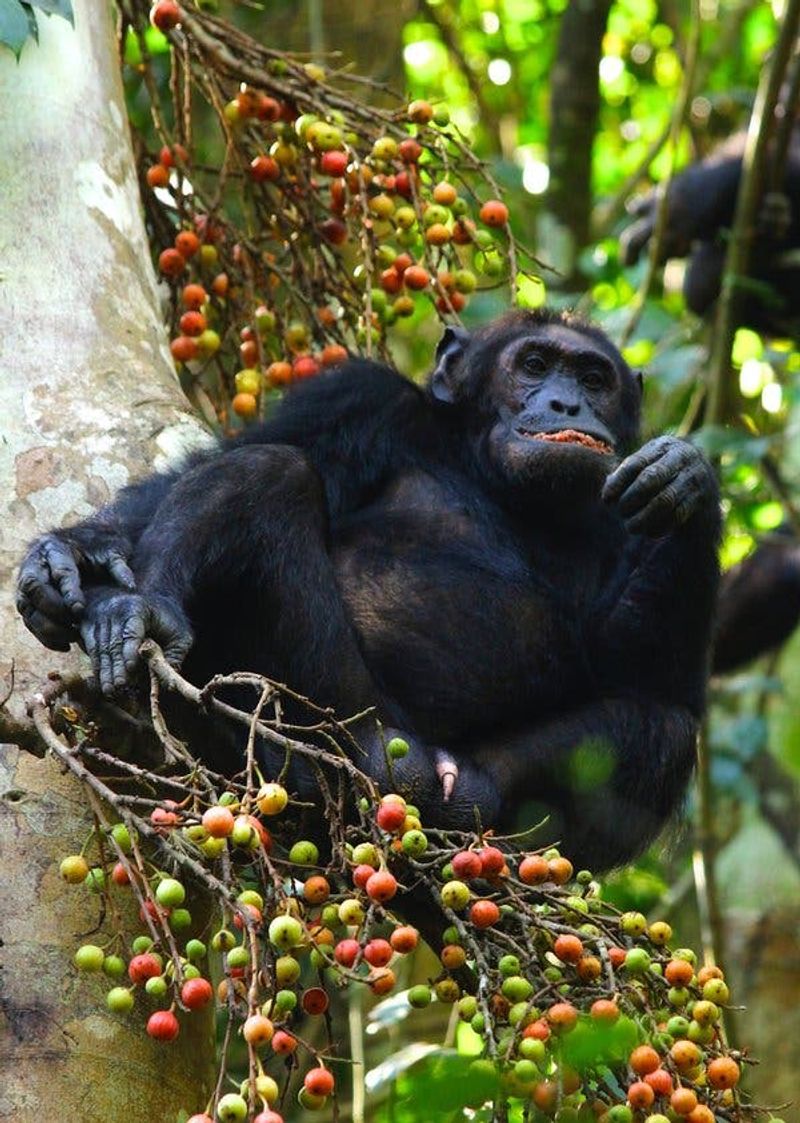
Seeds packed with fats and proteins are valuable food sources when other options are limited. Chimps carefully extract seeds from fruits and pods that other animals can’t access.
Their dexterous fingers allow them to pick out tiny seeds with impressive precision. By consuming and later excreting seeds, chimpanzees play a crucial role in forest regeneration, helping to disperse plant species throughout their habitat.
7. Bark Browsers
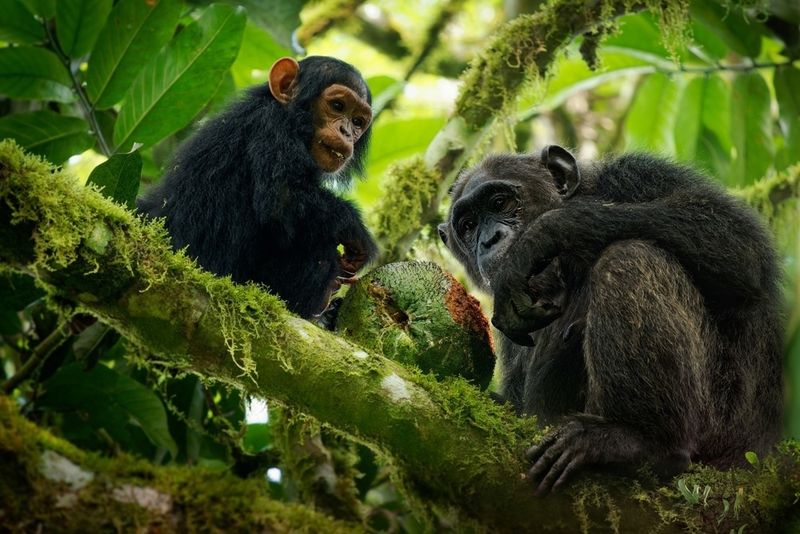
When food is scarce, chimps strip and eat tree bark containing vital nutrients. They peel back outer layers to reach the more nutritious cambium layer underneath. This behavior is especially common during dry seasons when preferred foods are unavailable.
The fibrous material provides essential minerals and helps maintain gut health. Some researchers believe certain barks may also have medicinal properties that chimps instinctively seek out.
8. Fruit Fanatics
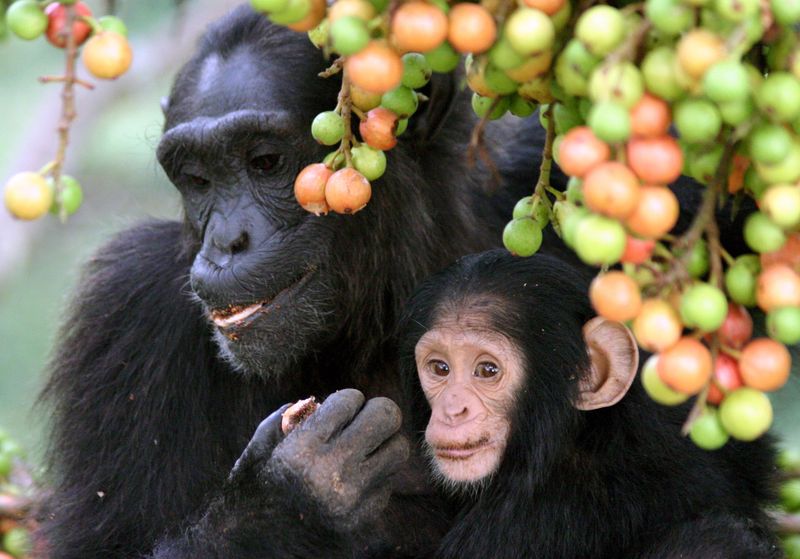
Ripe, juicy fruits make up about 60% of a chimpanzee’s diet in the wild. These clever primates absolutely love figs, berries, mangoes, and other sweet treats they can find in their forest homes.
Chimps have excellent memory for fruit tree locations and can track ripening patterns throughout their territory. They’ll travel miles just to reach their favorite fruit trees when they’re in season!
9. Flower Foragers
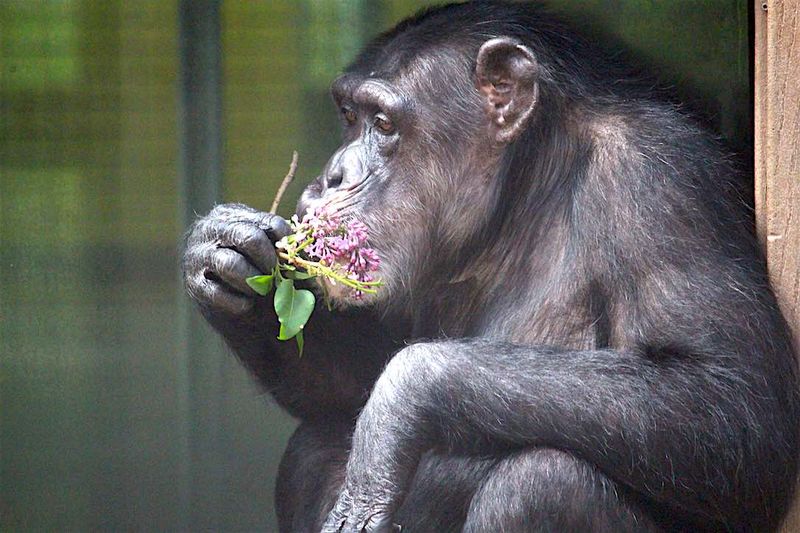
Bright, nectar-rich blossoms offer sweet treats and essential nutrients. Chimps delicately pick and consume flowers from various trees and plants throughout their habitats.
During certain seasons, flowers become an important dietary supplement. They’re particularly fond of the nectar-filled blossoms of kapok trees. Some chimps have been observed collecting large handfuls of flowers to enjoy as a leisurely snack while resting in tree nests.
10. Mushroom Munchers
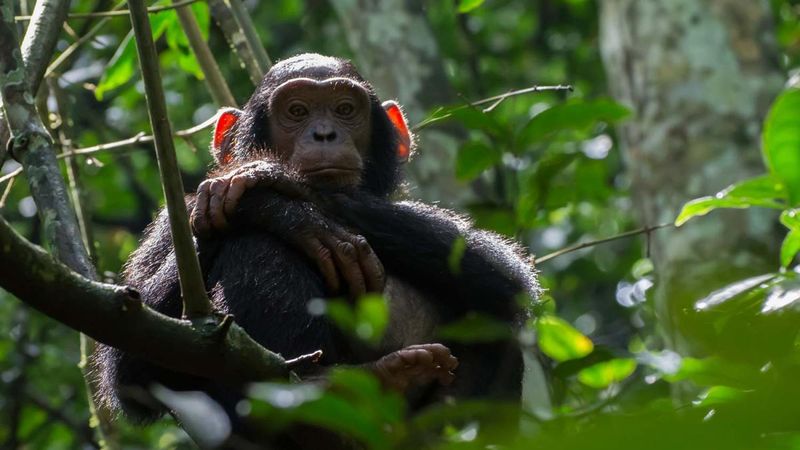
Various fungi provide chimps with nutrients not found in other plant foods. They selectively choose safe mushroom species, avoiding toxic varieties through learned behavior.
Researchers have observed chimps sniffing mushrooms before eating them, suggesting they may be checking for signs of spoilage or toxicity. This selective foraging demonstrates their sophisticated understanding of their food environment and ability to pass knowledge through generations.
11. Algae Aficionados

Some chimp communities collect and eat nutrient-rich algae from water sources. This green superfood provides essential minerals and vitamins not available in their typical forest diet. They use makeshift tools like leaves or sticks to skim algae from pond surfaces.
Researchers believe this behavior might have evolved in response to mineral deficiencies in some forest environments, showing how adaptable chimps are to their specific habitats.
12. Sap Suckers
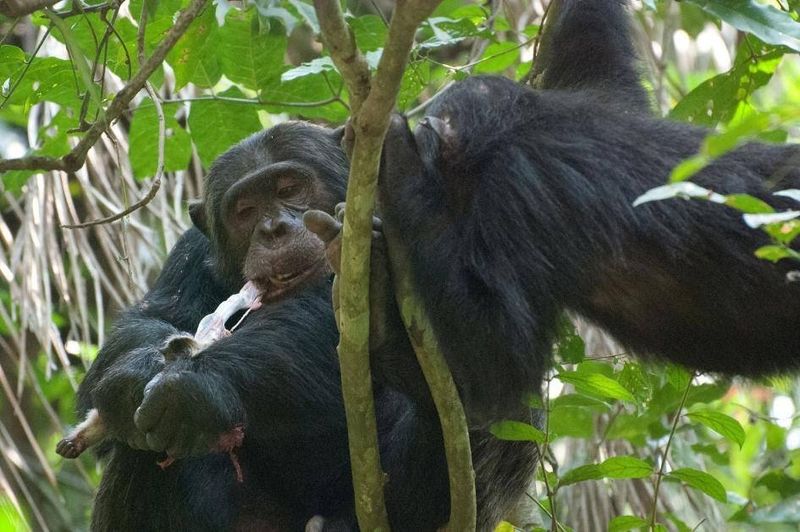
Sweet, energy-rich tree sap is a special treat that chimps access by making holes in tree bark. They’ll return repeatedly to productive sap sites, sometimes using leaves as sponges to collect the sticky substance.
This behavior is similar to how humans tap maple trees for syrup! Different chimp communities have developed unique techniques for harvesting sap, demonstrating their problem-solving abilities and cultural traditions.
13. Gum Gatherers
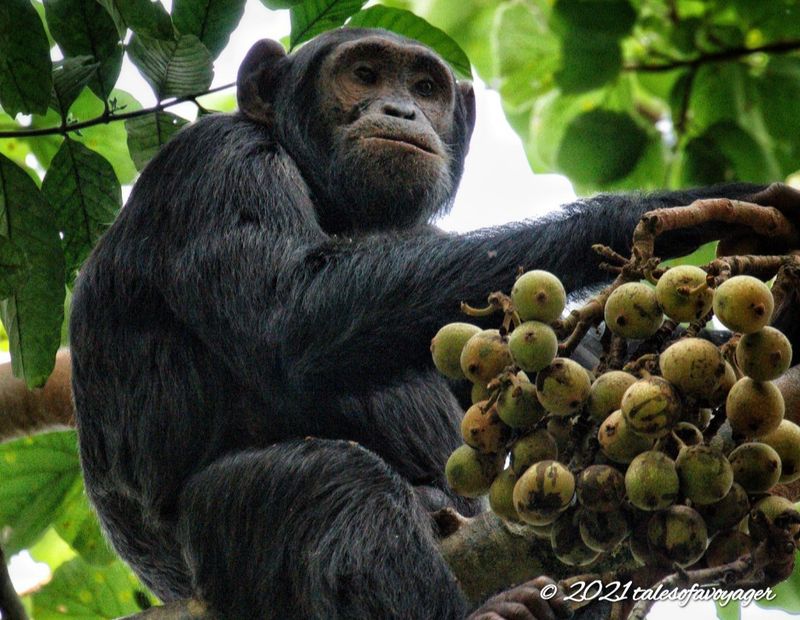
Tree gums and resins provide concentrated energy and help bind other foods during digestion. Chimps collect these sticky substances directly from tree wounds or after insect damage.
Rich in carbohydrates, these gooey treats help sustain chimps when other food sources are limited. The complex carbohydrates in gums also support healthy gut bacteria, potentially helping chimps fight off certain parasites and diseases.
14. Clay Consumers
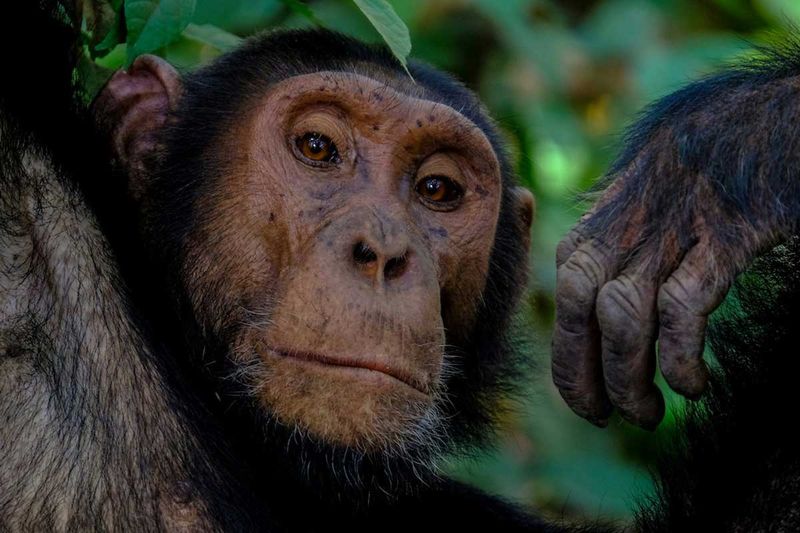
Strange as it seems, chimps occasionally eat clay or soil rich in minerals! This behavior, called geophagy, helps them detoxify certain plant compounds and provides essential minerals.
Clay can bind to harmful toxins in their digestive systems, allowing chimps to safely eat plants that might otherwise cause stomach upset. Pregnant female chimps have been observed eating clay more frequently, possibly to supplement calcium and other minerals needed during pregnancy.
15. Water Drinkers
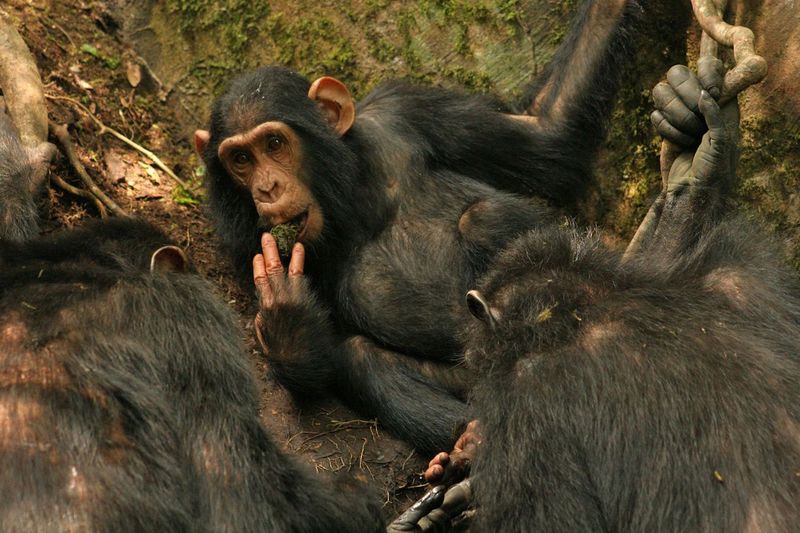
While not food exactly, water is essential to a chimp’s diet. They’ve developed clever ways to access it, including using leaf “sponges” to soak up water from tree hollows.
During dry seasons, chimps will travel long distances to reach reliable water sources. Some groups have been observed digging shallow wells in dry riverbeds to access underground water—an impressive demonstration of their problem-solving abilities and environmental knowledge.



